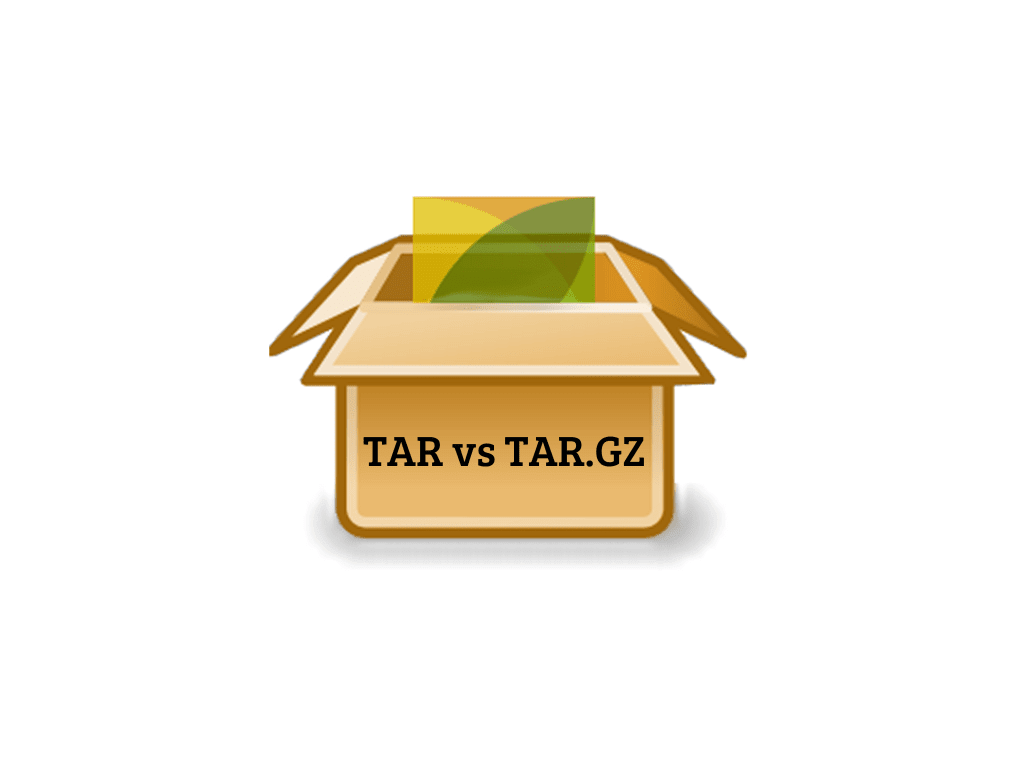If you’ve ever had to manage files on a Linux system, you’ve likely encountered TAR and TAR.GZ files. Both formats are used for archiving and compressing files but differ in key aspects. This article will explore the differences between TAR and TAR.GZ files and help you understand when to use each format.
What are TAR files?
TAR, short for Tape Archive, is a file format that combines multiple files into a single file called a “tarball.” The TAR format preserves file structure, permissions, and other metadata, making transporting and backing up files conveniently. However, TAR files do not compress the data they contain, meaning they can still take up considerable disk space.
What are TAR.GZ files?
TAR.GZ files are essentially TAR files that have been compressed using the GZIP compression algorithm. This compression reduces the file size, making TAR.GZ files smaller and more efficient to store and transfer than their uncompressed TAR counterparts.
Use Cases for TAR and TAR.GZ Files
When to use TAR files
TAR files are ideal when preserving multiple files’ file structure and metadata but don’t require compression. Some common use cases for TAR files include:
- Backing up files without needing to save space
- Transferring files between systems where compression is not needed
- Archiving files that are already compressed, such as images or videos
When to use TAR.GZ files
TAR.GZ files are better suited for situations where you want to archive multiple files and save storage space. Some common use cases for TAR.GZ files include:
- Compressing large amounts of data for storage or transfer
- Archiving text files, source code, or other data that benefits from compression
- Distributing software packages that contain multiple files
Creating TAR and TAR.GZ Files
Creating a TAR file
To create a TAR file in Linux, you can use the tar command followed by the -c (create) and -f (file) options. Here are a few examples:
Create a TAR file containing multiple files:
tar -cf archive.tar file1 file2 file3
Create a TAR file containing a directory and its contents:
tar -cf archive.tar directoryCreate a TAR file with verbose output to show the progress:
tar -cvf archive.tar directoryCreating a TAR.GZ file
To create a TAR.GZ file, you’ll use the tar command with the -c, -f, and -z (compress with gzip) options. Here are some example commands:
Create a TAR.GZ file containing multiple files:
tar -czf archive.tar.gz file1 file2 file3Create a TAR.GZ file containing a directory and its contents:
tar -czf archive.tar.gz directoryCreate a TAR.GZ file with verbose output to show the progress:
tar -czvf archive.tar.gz directoryExtracting TAR and TAR.GZ Files
Extracting a TAR file
To extract a TAR file, use the tar command with the -x (extract) and -f options. Here are a few examples:
Extract a TAR file to the current directory:
tar -xf archive.tarExtract a TAR file to a specific directory:
tar -xf archive.tar -C /path/to/directoryExtract a TAR file with verbose output to show the progress:
tar -xvf archive.tarExtracting a TAR.GZ file
To extract a TAR.GZ file, use the tar command with the -x, -f, and -z options. Here are some example commands:
Extract a TAR.GZ file to the current directory:
tar -xzf archive.tar.gzExtract a TAR.GZ file to a specific directory:
tar -xzf archive.tar.gz -C /path/to/directoryExtract a TAR.GZ file with verbose output to show the progress:
tar -xzvf archive.tar.gzAdvantages and Disadvantages of TAR and TAR.GZ Files
Advantages of TAR files
- Preserves file structure, permissions, and metadata
- Faster to create and extract compared to compressed formats
Disadvantages of TAR files
- Larger file sizes compared to compressed formats
- Less efficient for storage and transfer
Advantages of TAR.GZ files
- Smaller file sizes due to compression
- Efficient for storage and transfer
- Suitable for archiving text files, source code, and other compressible data
Disadvantages of TAR.GZ files
- Slower to create and extract compared to uncompressed formats
- Not ideal for files that are already compressed
Conclusion
In summary, TAR files are ideal when preserving file structure and metadata without compression, while TAR.GZ files are better suited for situations where both archiving and compression are required. Understanding the differences between these two formats and using the appropriate commands allows you to efficiently manage your files, save storage space, and optimize data transfer on Linux systems. Additionally, familiarizing yourself with the advantages and disadvantages of each format will allow you to make informed decisions when it comes to archiving and compressing your data. Ultimately, mastering TAR and TAR.GZ files will help you become more proficient in handling various file management tasks in the Linux environment.
Additional Resources and Relevant Links
- GNU Tar Manual: This comprehensive manual covers all aspects of the GNU
tarcommand, including detailed explanations of various options and use cases. - Gzip User Manual: The official Gzip user manual provides in-depth information about the Gzip compression utility, which is used with TAR to create TAR.GZ files.

